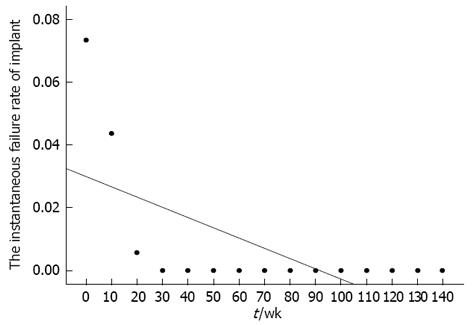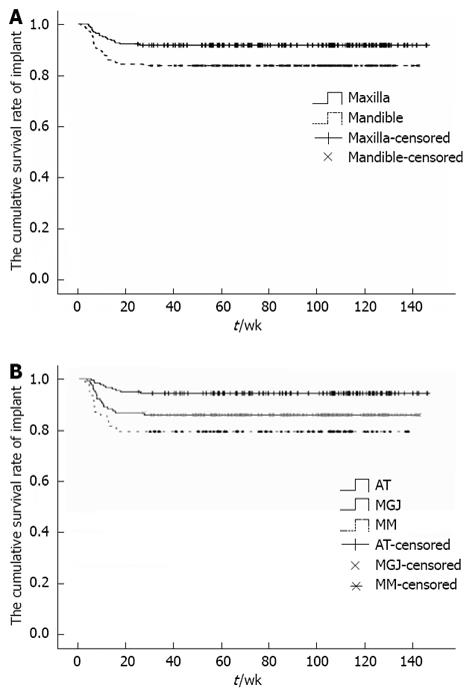Copyright
©2013 Baishideng Publishing Group Co.
World J Stomatol. Aug 20, 2013; 2(3): 56-61
Published online Aug 20, 2013. doi: 10.5321/wjs.v2.i3.56
Published online Aug 20, 2013. doi: 10.5321/wjs.v2.i3.56
Figure 1 Instantaneous failure curve of mini-implant: The hazard function shows that the maximum risk is immediately after mini-implant placement and then it declines to zero by time.
The linear fit of the hazard function was R2 = 0.623.
Figure 2 Kaplan-Meier survival analysis of mini-implant by jaw and gingival tissue.
A: The survival rate of mini-implants placed in the maxilla was significantly higher than that of those placed in the mandible; B: The survival rate of mini-implants placed in the attached gingival (AG) was significantly higher than that of those placed in the mucogingival junction (MGJ) and mucous membrane (MM). The duration of survival in the censored cases was measured from mini-implant placement to completion of treatment.
- Citation: Baik UB, Bayome M, Han KH, Park JH, Jung MH, Kook YA. Evaluation of factors affecting the success rate of orthodontic mini-implants by survival analysis. World J Stomatol 2013; 2(3): 56-61
- URL: https://www.wjgnet.com/2218-6263/full/v2/i3/56.htm
- DOI: https://dx.doi.org/10.5321/wjs.v2.i3.56










